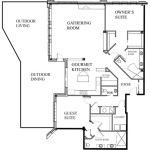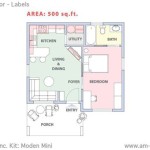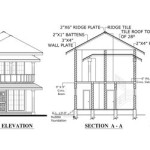Essential Aspects of Alaska Dog House Plans
Alaska dog houses are specifically designed to withstand the harsh climate conditions of Alaska, which can include extreme cold, wind, and snow. These houses provide a warm and safe shelter for dogs, ensuring their comfort and well-being during the cold winter months. Designing and building an Alaska dog house requires careful planning and consideration of several essential aspects.
1. Insulation and Ventilation
Insulation is crucial for maintaining warmth inside the dog house. Using materials like foam insulation or straw for insulation can prevent heat loss and create a cozy environment for the dog. Proper ventilation is equally important to prevent moisture buildup and ensure fresh air circulation. Ventilation holes or a small window can allow proper air exchange while minimizing heat loss.
2. Size and Dimensions
The size of the dog house should be appropriate for the size of the dog. The dog should have enough space to move around comfortably and lie down without feeling cramped. Consider the dog's height, length, and breed when determining the optimal dimensions. A general rule of thumb is to make the house about 25% larger than the dog's body size.
3. Materials and Durability
The materials used to build the dog house should be durable and able to withstand extreme weather conditions. Pressure-treated lumber is often used for the frame, as it is resistant to rot and decay. Exterior plywood or siding can be used for the walls and roof, providing protection against the elements. Additionally, a waterproof sealant or paint can further enhance the durability of the structure.
4. Roofing and Pitch
The roof of the dog house should be sloped to allow snow and rain to run off easily, preventing leaks and moisture buildup. A steep pitch is recommended to ensure proper drainage. Asphalt shingles, metal roofing, or durable plastic sheeting are suitable materials for the roof, providing protection from the elements.
5. Door and Entrance
The door or entrance of the dog house should be large enough for the dog to enter and exit comfortably. A flap door made of durable material like rubber or canvas can provide additional insulation and keep out the cold. Position the door to minimize drafts and ensure protection from prevailing winds.
6. Elevated Design
Elevating the dog house off the ground is beneficial for several reasons. It helps prevent moisture and cold from seeping in from the ground, ensuring a warmer and drier environment. Additionally, it protects the floor of the house from rot and decay, extending its lifespan.
7. Location and Placement
The location of the dog house is crucial for providing shelter and protection from the elements. Choose a spot that is sheltered from prevailing winds and snowdrifts. Additionally, ensure the house is placed on a well-drained surface to prevent water accumulation around it.
Diy Dog House Alaska Homestead Adventures

20 Free Diy Dog House Plans Care Com Resources

How To Build A Sled Dog House Plans Materials Design Frame And Plywood

Large Dog House Plans Howtospecialist How To Build Step By Diy

9 Diy Pallet Dog House Plans You Can Build Today With Pictures Hepper

20 Free Diy Dog House Plans Care Com Resources

Dog House Plans Police Houses

8 X 12 Ft Amish Made Dog Kennel House Plans Diy Insulated Kennels

Dog House Plans Police Houses

Living Conditions For The Dogs Hetta Huskies Dog Sledding Finland Mushing Husky Safari Lapland Scandinavia








